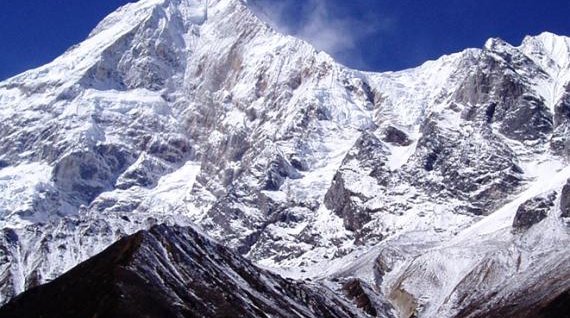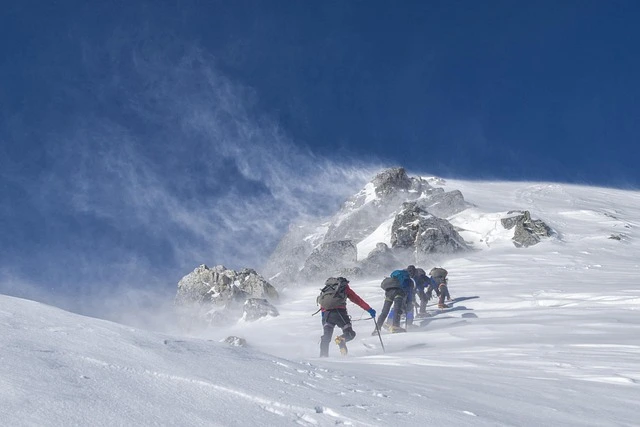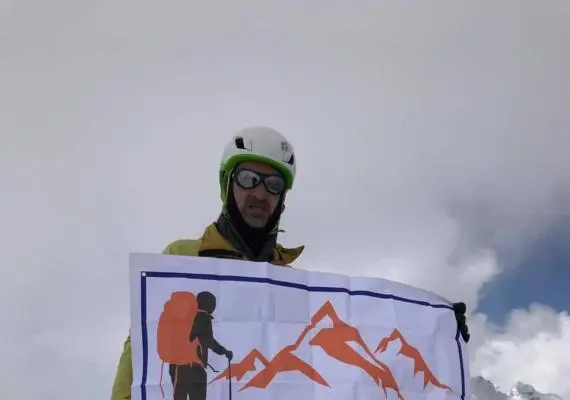The Tsum Valley Trek is a remarkable journey into one of Nepal's most spiritually significant and culturally preserved regions. Hidden in the northern Gorkha district near the Tibetan border, this sacred valley remained closed to foreigners until 2008, preserving centuries of authentic Tibetan Buddhist traditions that few places on earth can match.
This 11-day Manaslu Tsum Valley Trek takes you through dramatic gorges, ancient monasteries, and traditional stone villages where life has remained unchanged for generations. The valley holds the rare distinction of being Nepal's only recognized "beyul"—a sacred hidden land prophesied by Guru Rinpoche—and has maintained a non-violence declaration since 1920, making it a true spiritual sanctuary.
Quick Trek Facts
Duration: 11 Days (9 days trekking, 2 days driving)
Maximum Elevation: 3,700m (Mu Gompa)
Trek Difficulty: Moderate
Best Season: March–May and September–November
Starting/Ending Point: Kathmandu
Total Trekking Distance: Approximately 95 km
Accommodation: Teahouse lodges throughout
Meals: All meals included (Breakfast, Lunch, Dinner)
Group Size: Minimum 2 trekkers required
Why Choose the Tsum Valley Trek?
Is Tsum Valley worth it? This is the question many travelers ask before committing to this remote journey, and the answer is an emphatic yes for those seeking authentic cultural immersion over crowded tourist trails.
Unlike the busy routes to Everest Base Camp or Annapurna, the Tsum Valley sees only a few hundred visitors annually. This limited footfall has preserved the valley's spiritual atmosphere and genuine hospitality in ways that commercialized treks simply cannot offer. The local Tsumba people maintain their traditional dress, ancient customs, and Buddhist practices as living culture rather than tourist performance.
The trek also delivers exceptional value for cultural depth versus physical demands. With a maximum altitude of just 3,700m at Mu Gompa, altitude sickness risks remain minimal compared to high-pass treks, yet you gain access to Nepal's largest Buddhist monastery, sacred meditation caves, and villages that function as living museums of Himalayan heritage.
Tsum Valley Trek Highlights
Every day on this journey brings meaningful discoveries that connect you with centuries of Buddhist tradition and breathtaking Himalayan scenery. The trek's cultural and natural highlights include:
Mu Gompa Monastery – Nepal's largest Buddhist monastery sits at 3,700m near the Tibetan border. Founded in the 15th century, this active spiritual center houses over 100 resident monks, ancient scriptures, and intricate murals that have survived centuries. Visiting during morning prayers offers an unforgettable spiritual experience.
Milarepa Meditation Caves – The legendary Tibetan saint Milarepa chose these sacred caves for his intensive meditation practice centuries ago. Pilgrims still visit seeking blessings, and the site radiates a palpable spiritual energy that even skeptical travelers acknowledge.
Rachen Gompa – This stunning hilltop monastery near Chhokangparo offers panoramic valley views and peaceful contemplation spaces. The resident monks welcome respectful visitors and often share tea while explaining the monastery's history and daily rituals.
Traditional Stone Villages – Throughout the trek, you'll pass through villages featuring flat-roofed stone houses, spinning prayer wheels, and ancient mani walls carved with sacred mantras. Chhokangparo's twin villages connected by farmland showcase traditional Tibetan architecture at its finest.
Ganesh Himal and Sringi Himal Views – The spectacular Ganesh Himal range dominates the horizon throughout the trek, while views of Sringi Himal, Boudha Himal, and distant Himalayan giants provide constant visual rewards.
Natural Hot Springs at Tatopani – On Day 2, the trail passes through Tatopani, famous for its natural hot springs. Locals believe these waters have healing properties, particularly for skin conditions, and a soak here provides welcome relief for tired muscles.
Tsum Valley Trek Map and Route Overview
Understanding the Tsum Valley Trek route helps visualize this remarkable journey through Nepal's hidden Buddhist sanctuary. The trek follows the Budhi Gandaki River northward before branching into the sacred Tsum Valley, reaching its highest point at Mu Gompa near the Tibetan border.
Route Progression and Elevations:
| Day |
Location |
Elevation |
Key Features |
| 1 |
Machhakhola |
930m |
Trek starting point, riverside village |
| 2 |
Jagat |
1,410m |
Historic trading village, hot springs at Tatopani |
| 3 |
Lokpa |
2,200m |
Tsum Valley gateway, trail junction |
| 4 |
Chumling |
2,386m |
First major Tsum village, monastery |
| 5 |
Chhokangparo |
3,010m |
Twin villages, Rachen Gompa, Ganesh Himal views |
| 6 |
Nile |
3,361m |
Upper valley base, Milarepa Cave access |
| 7 |
Mu Gompa |
3,700m |
Trek high point, Nepal's largest monastery |
| 8-10 |
Return |
Descending |
Retracing route with new perspectives |
Total Tsum Valley Trek Distance: Approximately 95 kilometers round trip
Trail Characteristics: The path varies from subtropical forests in the lower sections to high-altitude Tibetan landscapes near Mu Gompa. Well-maintained trails include suspension bridges, stone staircases, and village paths. No technical climbing is required, though some sections involve sustained ascending and descending.
Tsum Valley Trek Cost and Package Details
Understanding the complete Tsum Valley Trek cost helps you budget appropriately for this once-in-a-lifetime cultural adventure. Our comprehensive package includes all logistics so you can focus entirely on the experience.
Permit and Entry Fees
Tsum Valley's protected status requires specific permits that must be arranged through registered agencies:
Permit and Entry Fees
| Permit |
SAARC Nationals |
Other Nationalities |
| Restricted Area Permit (RAP) |
$35/week |
$50/week |
| Manaslu Conservation Area Permit (MCAP) |
NPR 3,000 |
NPR 3,000 (~$23) |
| TIMS Card |
$10 |
$20 |
| Total Permit Cost |
~$68 |
~$93 |
Note: The Tsum Valley Trek permit cost requires minimum 2 trekkers and a licensed guide—independent trekking is not permitted in this restricted area.
Package Inclusions
Our Tsum Valley Trek package covers everything you need for a worry-free journey:
Transportation:
- Private vehicle Kathmandu–Machhakhola (both ways)
- All ground transfers as per itinerary
- Airport pickup and drop-off
Accommodation:
- 1 night hotel in Kathmandu (before departure)
- 9 nights teahouse lodges during trek
- 1 night hotel in Kathmandu (after trek)
Meals:
- All meals during trek (breakfast, lunch, dinner)
- Welcome and farewell dinners in Kathmandu
- Tea and coffee during meals
Trekking Support:
- Licensed English-speaking trekking guide
- Porter service (1 porter per 2 trekkers)
- All guide and porter meals, accommodation, insurance
Permits and Fees:
- Restricted Area Permit
- MCAP permit
- TIMS card
- All local taxes and fees
Safety:
- Comprehensive first aid kit
- Oximeter for altitude monitoring
- Emergency communication equipment
Package Pricing
| Package Type |
Price (USD) |
Best For |
| Standard Group Trek |
$1,250–1,450 |
Budget-conscious cultural travelers |
| Private Trek (2 pax) |
$1,450–1,650 |
Couples, friends wanting flexibility |
| Premium Private |
$1,800–2,200 |
Best lodges, senior guide, extra comfort |
What's Not Included
- International airfare
- Nepal visa fees
- Travel insurance (mandatory—must include helicopter evacuation)
- Personal expenses and tips
- Alcoholic beverages
- Hot showers ($3–5) and device charging ($2–3) at teahouses
- Emergency evacuation costs (covered by your insurance)
- Items not mentioned in inclusions
Tsum Valley Trek Difficulty and Fitness Requirements
How challenging is the Tsum Valley Trek difficulty level? This is a moderate trek accessible to reasonably fit individuals without prior high-altitude experience.
Physical Demands Overview:
The trek involves 9 consecutive days of walking, averaging 5–6 hours daily with elevation gains of 300–600 meters on ascending days. The maximum altitude of 3,700m at Mu Gompa is significantly lower than popular high-pass treks like Everest Base Camp (5,364m) or Annapurna Circuit (5,416m), reducing altitude sickness risks considerably.
Terrain and Trail Conditions:
Trails are well-maintained throughout, consisting of:
- Stone pathways through villages
- Forest trails with moderate grades
- Suspension bridges over rivers
- Some steep sections requiring sustained effort
- No technical climbing or scrambling
Who Can Complete This Trek:
The Tsum Valley Trek suits a wide range of travelers:
- First-time Himalayan trekkers with reasonable fitness
- Cultural enthusiasts prioritizing experience over extreme challenge
- Photographers seeking authentic subjects
- Families with children aged 14 and above
- Active travelers aged 18–65
- Those who prefer moderate altitude to extreme heights
Recommended Preparation:
Begin training 6–8 weeks before departure:
- Cardiovascular exercise (hiking, running, cycling) 3–4 times weekly
- Building to walks of 10–15 km with daypack
- Stair climbing for leg strength
- Core exercises for stability
- Practice with your trekking boots to ensure proper fit
Best Time for Tsum Valley Trek
Choosing the best time to do Tsum Valley Trek in Nepal significantly impacts your experience. The valley's weather patterns create distinct seasonal windows for optimal trekking.
Autumn Season (September–November) — Highly Recommended
Autumn offers the finest trekking conditions with stable weather, clear skies, and comfortable temperatures. October and November provide exceptional mountain visibility, with Ganesh Himal and surrounding peaks visible for days on end. Temperatures range from 10–20°C during the day and 0–10°C at night at higher elevations. This period coincides with major Buddhist festivals, offering cultural experiences unavailable at other times. The main drawback is higher tourist numbers, though Tsum Valley remains uncrowded compared to mainstream treks.
Spring Season (March–May) — Excellent Alternative
Spring brings warming temperatures and spectacular rhododendron blooms in the lower forests. Mountain views remain excellent, though occasional afternoon clouds may obscure peaks. Wildlife becomes more active, and the valley's barley fields show fresh green growth. Late May can bring pre-monsoon showers, so March and April offer the most reliable conditions. Fewer trekkers than autumn means even greater solitude.
Shoulder Seasons — For Adventurous Travelers
September marks the monsoon's end, with lush green landscapes but potentially muddy trails. Early December offers clear skies but cold temperatures and some teahouse closures. These periods suit experienced trekkers comfortable with variable conditions and willing to trade convenience for solitude.
Avoid: June–August
Monsoon rains make the Tsum Valley Trek inadvisable during summer months. Heavy precipitation causes trail damage, leech infestations in lower sections, and most teahouses close for the season.
How to Reach Tsum Valley
Understanding how to reach Tsum Valley helps set expectations for the journey. Unlike treks with flight access, reaching this sacred valley requires road travel followed by multi-day trekking.
Getting to the Trailhead:
The journey begins with a drive from Kathmandu to Machhakhola, covering approximately 180 kilometers over 8–9 hours. The route passes through Dhading Besi (district headquarters), then follows increasingly rugged roads along the Budhi Gandaki River. Road conditions are paved until Dhading Besi, then become unpaved jeep tracks requiring 4WD vehicles. Our experienced drivers navigate these roads regularly, ensuring safe travel despite the challenging terrain.
Why Road Access Matters:
The absence of flight requirements offers several advantages:
- No weather-related flight delays or cancellations
- Lower overall trek cost
- Gradual acclimatization during the drive
- Scenic journey through rural Nepal
- Reliable scheduling regardless of conditions
Return Options:
The standard return retraces the route to Machhakhola, then drives back to Kathmandu. Helicopter evacuation is available for emergencies but requires prior arrangement and appropriate travel insurance coverage.
Tsum Valley and Manaslu Circuit Connection
Many trekkers ask about combining the Manaslu and Tsum Valley Trek for a more comprehensive Manaslu region experience. While our standard package focuses on the 11-day Tsum Valley journey, understanding the connection helps with future planning.
Geographic Relationship:
Tsum Valley branches off from the main Manaslu Circuit trail at Lokpa village (Day 3 of our itinerary). Trekkers doing both routes share the initial approach through the Budhi Gandaki gorge before the trails diverge—one heading into sacred Tsum Valley, the other continuing toward Larkya La pass.
Key Differences:
| Aspect |
Tsum Valley Trek |
Manaslu Circuit |
| Duration |
11 days |
14–18 days |
| Max Altitude |
3,700m |
5,106m (Larkya La) |
| Focus |
Cultural/spiritual |
Trekking challenge |
| Difficulty |
Moderate |
Challenging |
| Crowds |
Very few |
Moderate |
Combination Options:
For those with more time, an 18–22 day Manaslu Tsum Valley Trek explores both areas. This extended journey first completes Tsum Valley to Mu Gompa, then joins the Manaslu Circuit for the high-pass crossing. Contact us for customized itineraries combining these remarkable routes.
Tsum Valley Trek Accommodation and Meals
Teahouse lodges provide accommodation throughout the trek, offering authentic Himalayan hospitality in basic but comfortable settings.
What to Expect from Teahouses:
Accommodation along the Tsum Valley Trek route consists of family-run lodges offering twin-bedded rooms with mattresses (sleeping bags required), shared bathroom facilities, common dining areas with wood stoves, and solar-powered electricity for charging devices. Rooms are simple but clean, with wooden walls and floors typical of mountain construction. Hot bucket showers are available for a small fee ($3–5), and most lodges can charge electronic devices ($2–3).
Meal Options:
Teahouse kitchens prepare hearty meals suited to trekkers' appetites:
- Dal bhat (lentils, rice, vegetables) with unlimited refills
- Noodle soups and fried rice variations
- Chapati with eggs or vegetables
- Pancakes and porridge for breakfast
- Tea, coffee, and hot chocolate
- Limited snacks and chocolate bars
Food quality is generally good, with fresh ingredients where possible. Vegetarian options are readily available throughout. Meat dishes become less reliable at higher elevations where supplies are harder to transport.
Accommodation Quality by Location:
| Village |
Accommodation Standard |
Notes |
| Machhakhola |
Good |
Multiple lodges, relatively comfortable |
| Jagat |
Good |
Historic village, established teahouses |
| Lokpa |
Basic–Moderate |
Gateway village, growing facilities |
| Chumling |
Moderate |
Improving infrastructure |
| Chhokangparo |
Best in Tsum |
Most developed, multiple options |
| Nile |
Basic |
Limited choices, simple facilities |
Tsum Valley Trek Guide and Permit Requirements
A licensed Tsum Valley Trek guide is mandatory for all foreign trekkers due to the valley's restricted area status. Understanding these requirements helps you plan appropriately.
Why Guides Are Required:
Tsum Valley's protected status exists to preserve cultural integrity and ensure visitor safety in this remote region. The restricted area permit system requires registered agencies to arrange guides and submit trekker documentation. This regulation has successfully maintained the valley's authenticity while allowing controlled tourism that benefits local communities.
What Our Guides Provide:
Our experienced guides offer far more than navigation assistance:
- Deep knowledge of Tsum Valley's history and Buddhist traditions
- Introductions at monasteries and cultural sites
- Local language skills (Nepali, Tibetan dialects)
- First aid training and emergency response capability
- Meal and accommodation coordination
- Cultural interpretation and etiquette guidance
Porter Services:
Our packages include porter support (1 porter per 2 trekkers), allowing you to trek with just a daypack. Porters carry up to 25 kg each and receive fair wages, proper meals, and appropriate equipment—a commitment to ethical trekking we take seriously.
Permit Processing:
Allow 2–3 business days for permit processing in Kathmandu. Required documents include:
- Passport copies (including Nepal visa)
- Passport-size photographs
- Travel insurance certificate showing helicopter evacuation coverage
- Completed application forms (we handle this)
Tsum Valley Trek Packing Essentials
Proper gear ensures comfort and safety throughout your trek. Here's what to bring:
Clothing:
- Moisture-wicking base layers (2–3 sets)
- Insulating fleece jacket
- Down jacket for cold mornings and evenings
- Waterproof outer shell (jacket and pants)
- Comfortable trekking pants (2 pairs)
- Warm hat, sun hat, and buff/neck gaiter
- Gloves (lightweight and warm pairs)
- Hiking socks (4–5 pairs, wool or synthetic)
Footwear:
- Sturdy trekking boots (broken in before trek)
- Camp sandals or flip-flops for evenings
- Gaiters (optional, useful for muddy sections)
Equipment:
- Daypack (15–20L) for daily essentials
- Sleeping bag (comfort rating -10°C to -15°C)
- Trekking poles (highly recommended for descents)
- Headlamp with spare batteries
- Water bottles (2L capacity) and purification tablets
- Sunglasses with UV protection
Personal Items:
- Toiletries and quick-dry towel
- Sunscreen (SPF 50+) and lip balm with SPF
- Personal first aid kit and medications
- Camera with extra batteries and memory cards
- Cash in Nepali rupees (no ATMs on trail)
- Portable charger/power bank
Tsum Valley Trek Photo Opportunities
The Tsum Valley Trek photos you capture will document one of Nepal's most visually stunning and culturally rich regions. The valley offers exceptional photography opportunities for both landscapes and cultural subjects.
Best Photography Locations:
Mu Gompa provides the trek's most significant photographic subject, with ancient architecture set against Himalayan peaks and morning prayers creating atmospheric interiors. The Milarepa Cave area offers both spiritual sites and dramatic mountain panoramas including Poshyop Glacier and Churke Himal. Chhokangparo's twin villages with terraced fields and Ganesh Himal backdrop create classic Himalayan compositions, while Rachen Gompa's hilltop position offers sweeping valley perspectives.
Photography Tips:
- Golden hours (6–8 AM and 4–6 PM) produce the best mountain light
- Always ask permission before photographing people
- Respect monastery photography rules (some areas prohibit cameras)
- Carry spare batteries in body warmth (cold drains them quickly)
- Back up photos whenever charging opportunities arise
- Include human elements for scale in landscape compositions
Book Your Tsum Valley Trek
Ready to discover Nepal's sacred hidden valley? Our experienced team handles all logistics—permits, guides, accommodation, and transportation—so you can focus entirely on this transformative cultural journey.
What Sets Himalayan Hero Apart:
- Locally owned and operated for authentic experiences
- Experienced guides with deep cultural knowledge
- Fair wages and proper equipment for all staff
- Personalized service with flexible itineraries
- Proven safety record in remote regions
Contact us today to reserve your Tsum Valley Trek or discuss customized options, including Manaslu Circuit combinations.
Related Treks in the Manaslu Region





